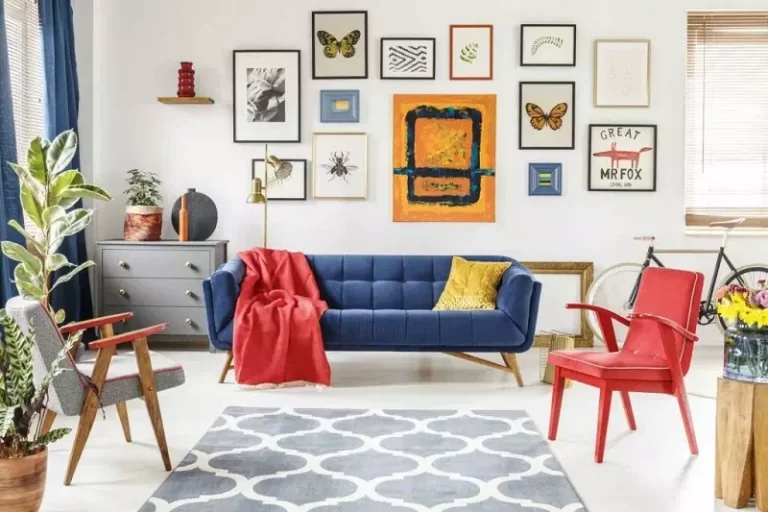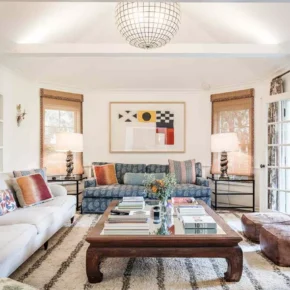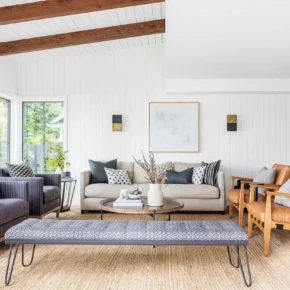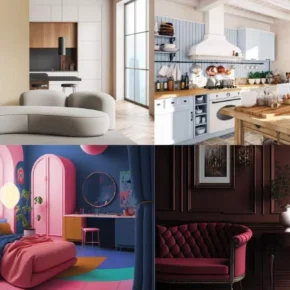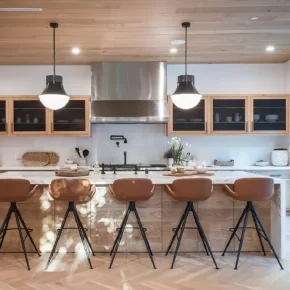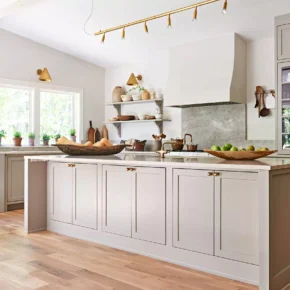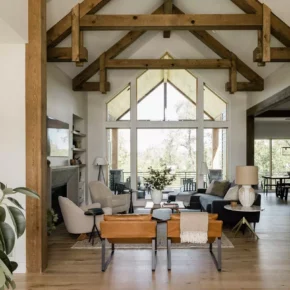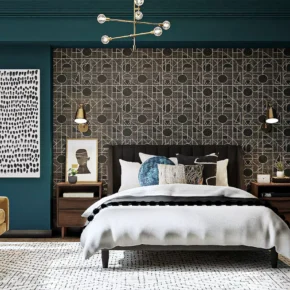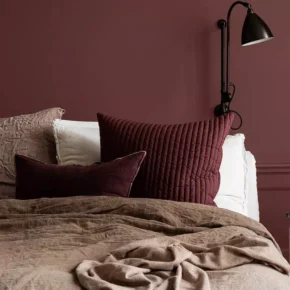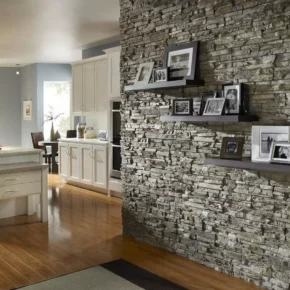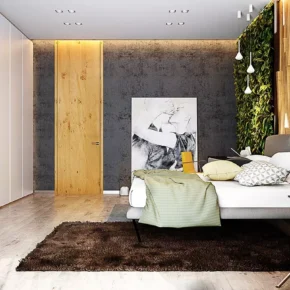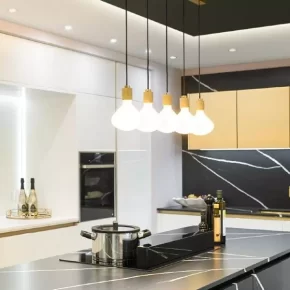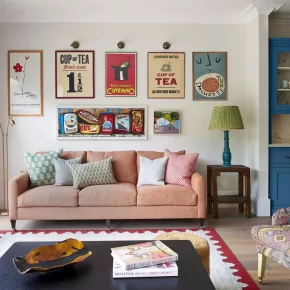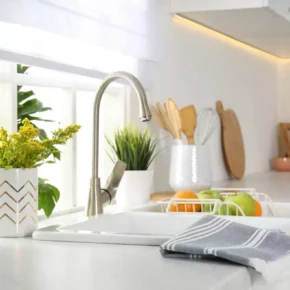Color accents in modern interior design are one of the most effective ways to enliven a space, give it character and emphasize individuality.
They can be thin or saturated, bright or muted, but always attract attention.
1. What are color accents in the interior?
A color accent is a certain color or several colors that stand out against the background of the main palette of the room. Often they are used in the form of furniture, decor, textiles or accessories. The key task of color accents is to highlight certain areas, objects or create a contrast that adds depth and dynamics to the space.
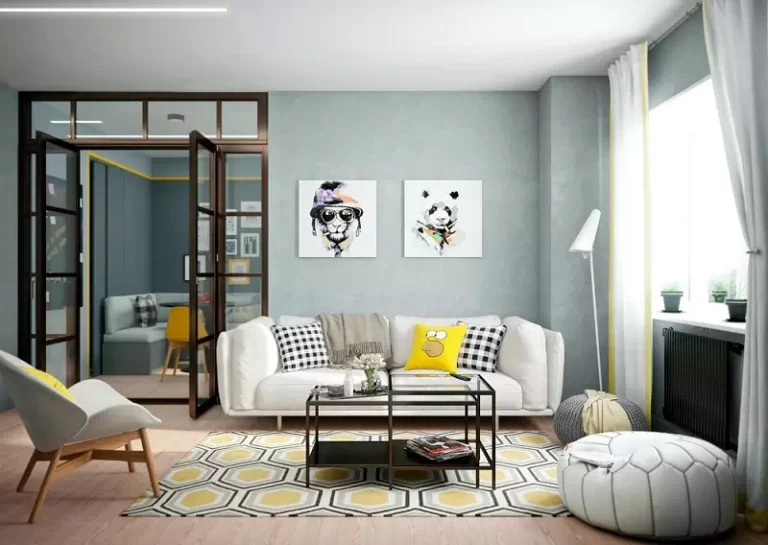
2. How to choose the right color?
The choice of color accent depends on many factors, including the style of the interior, the size of the room, the level of illumination and personal preferences.
- Neutral background . If your interior is based on neutral shades (beige, white, gray), then a bright accent can be any rich color — red, green, blue.
- Contrast . Using colors that are located at opposite ends of the color wheel (for example, blue and orange) will help create an effective contrast.
- Calm atmosphere . For those who seek peace, it is recommended to use muted accents of pastel shades – light pink, mint, soft yellow.
3. Ways of using color accents
There are many options for how and where to apply color accents in the interior. Let’s consider the most common of them.
Colored walls
Accent walls are one of the most popular ways to add color to an interior. Painted in a bright or dark shade, one of the walls can create a focal point in the room and visually change the proportions of the space. To avoid oversaturation, the rest of the walls can remain in neutral colors.
Furniture and accessories
Another way to create accents is to use furniture in bright colors. For example, a bright yellow sofa against the background of white walls or a blue armchair in a minimalist space will instantly attract attention. Also, pillows, bedspreads, curtains and rugs can be a great way to add color without the need for a major change.
Textile
Textiles are an easily changeable element of the interior, so they are often used to create seasonal or temporary accents. In autumn, you can add warm orange shades through blankets or pillows, and in summer, choose fresher and cooler colors, such as blue or white.
Lighting
Lamps with colored lampshades or lamps can not only provide functional lighting, but also bring an original accent to the space. In addition to the color of the devices themselves, the play of light and shadow, created with the help of colored light sources, can radically change the atmosphere of the room.
Artwork and decor
Paintings, posters or sculptures are a great way to add bright spots of color to the interior. Wall art can emphasize the overall style of a room or become the centerpiece around which the entire concept is built.
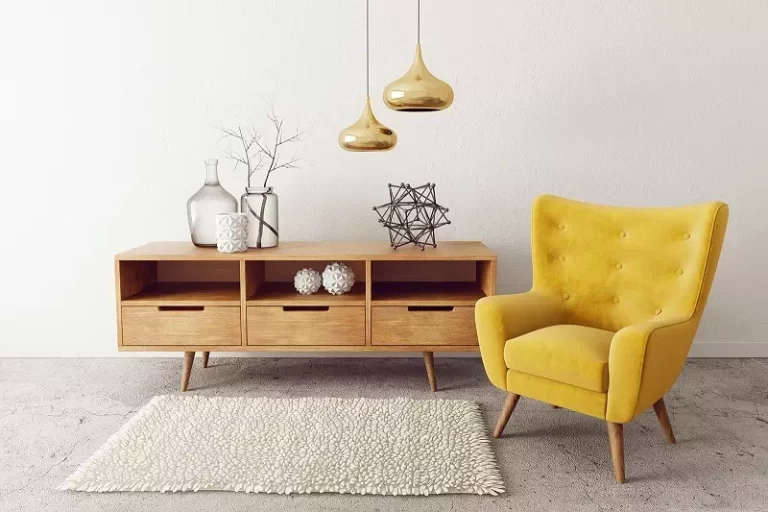
4. Balance and harmony
Color accents should harmoniously fit into the overall interior. It is important to follow the rule of balance: an excess of bright colors can make the room too saturated and visually overloaded. The golden rule is no more than 10% of accent elements from the total area of the room. This allows you to add brightness while maintaining harmony and peace.
5. Trends in color accents
- Green . Green in all its variations (from mint to emerald) remains one of the main color accents in the design. It symbolizes nature, peace and harmony.
- Terracotta . This warm natural color is back in trends and is great for creating a cozy atmosphere in any room.
- Bright blue . Blue and blue shades add elegance and a sense of space, especially in modern interiors.
- Metallic . Shades of gold, copper or bronze, used in small details (lamps, frames, figurines), can serve as an excellent color accent.
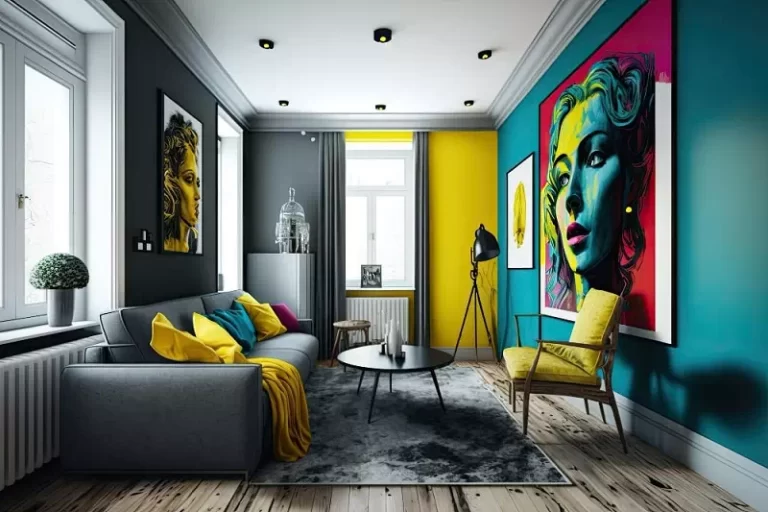
6. Tips for successful use of color accents
- Start small . If you are not sure about the choice of color, try to add it to the interior through small details, for example, pillows or vases.
- Seasonal changes . You can change accents depending on the season. Use fresh and bright colors in the summer, and warm and muted colors in the fall.
- Study the color wheel . Using the color wheel will help you find harmonious combinations of colors to create contrast or maintain the unity of the color scheme.
Color accents in the interior are a powerful tool for adding dynamics, mood and personalization of your space. Correctly selected colors can make the room more interesting, balanced and comfortable for life. Experiment with color solutions, following the rules of balance, and your interior will always look modern and stylish.

